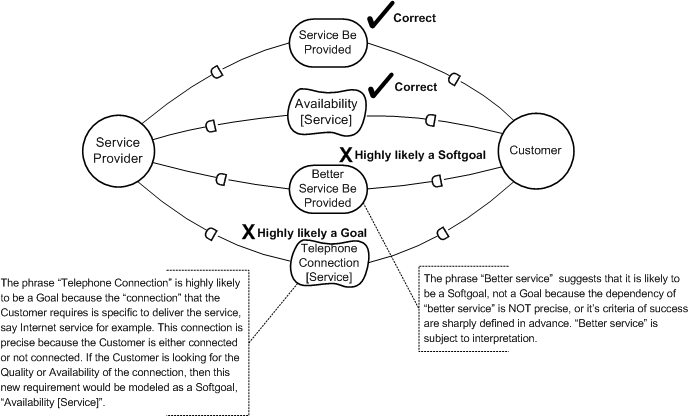This stable version of the Guideline Wiki Page displays the guideline as per the i* Style of the University of Toronto. Registered users can use 'Open Version' link right at the end of the guideline statement below to access the open version of this page
Guideline (Beginner,Concept) Use a Softgoal for quality criterion and use a (hard) goal for a sharply defined objective. Open Version
Discussion: There are goals (hard goals) and softgoals. Examples of goals are: Product Be Designed, Service Be Provided, and Team Be Hired. Examples of softgoals are: Design Process Be Efficient, Low Product Cost, and Availability [Service]. Not every goal is a softgoal. Use softgoals when modeling quality attributes or non-functional requirements (NFRs) or use softgoals when stakeholders’ goals are not precise or their criteria of success are not sharply defined in advance. On the other hand, a Goal is precise and its end state or outcome is clearly specified. Goals are part of the functional requirements.
As shown in the illustration, the phrase “Better service” suggests that it is likely to be a Softgoal, not a Goal. “Better service” is NOT precise, or it’s criteria of success are sharply defined in advance. “Better service” is subject to interpretation. Conversely, “Telephone Connection” is highly likely to be a Goal because the Customer is either connected or not connected. If the Customer is concerned about the Quality or Availability of the connection, then this new requirement would be modeled as a Softgoal, “Availability [Service]”.

For questions regarding i* syntax please click on the "discuss" tab. This feature is available for registered users only. For registration information please see the Registration and User Rights Policy for the i* Wiki.
